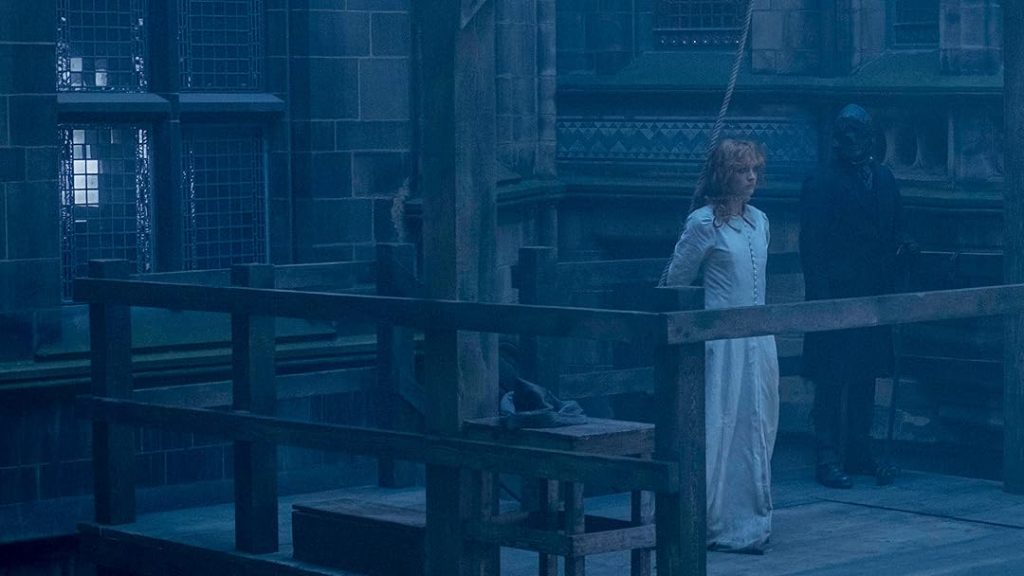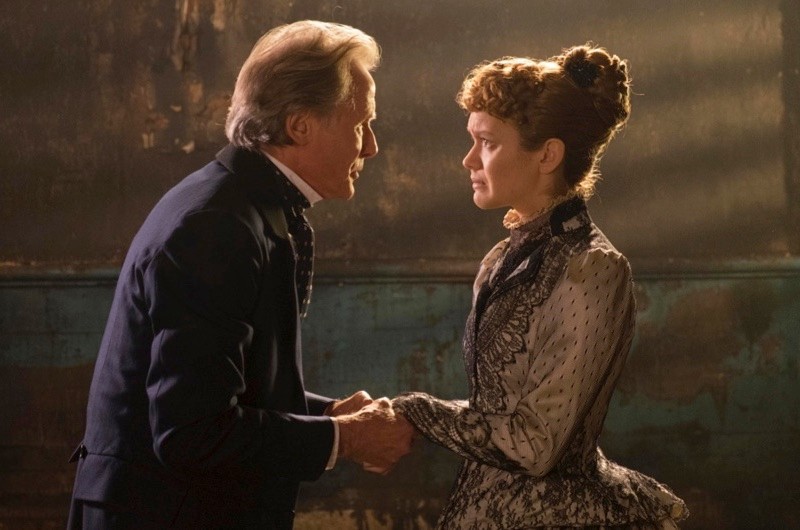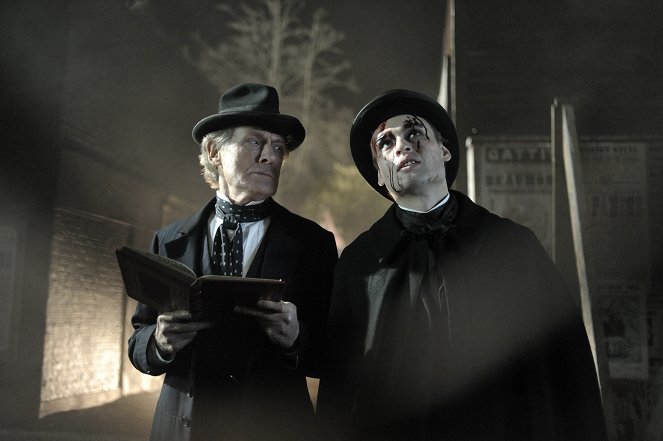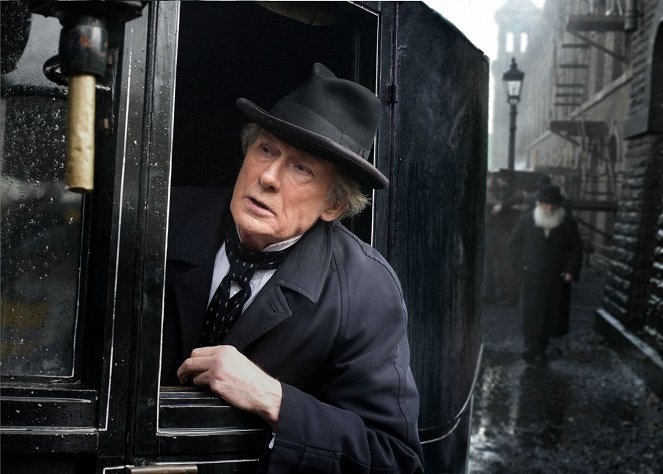The Limehouse Golem (2016): The Hunt for the Monster in the London Fog
The Limehouse Golem is a gothic thriller set in late 19th-century London. With a dark atmosphere, gruesome murders and a sophisticated plot, the film takes viewers on a thrilling journey with Inspector Kildare (played by Bill Nighy) in the investigation of a serial killer – known to the people by the legendary name: Golem.
Plot: When legend collides with bloody reality

In 1880, Limehouse – a poor and bustling working-class area of London – is shaken by a series of gruesome murders. Bodies are mutilated, messages left in blood, and there are no traces leading to the killer. People begin to believe that this is the work of a legendary creature from Jewish legend: the Golem – a killing machine created by humans.
Inspector Kildare, a man considered a “disgraced pawn”, is assigned to investigate the case as a political trap. However, with perseverance and sharp intuition, he quickly discovers the connection between the case and the young actress Elizabeth Cree (Olivia Cooke) – who has just been accused of killing her husband.

Mysteries pile up and captivating performances
The film is more than just a normal investigation. It is a maze of suspicions, intertwining truth and theater, drama and real life. Elizabeth – the main witness and suspect – is a multi-layered character with a painful past and a complex inner life. Olivia Cooke plays this role excellently, creating an image of a strong, intelligent but wounded woman.
Bill Nighy, with his poised demeanor and brooding gaze, brings to life a resilient but isolated Kildare, torn between duty, compassion and the dark truths waiting to be revealed.
London: the third character
London in The Limehouse Golem is not just a setting, it is a living character: foggy, creepy in its narrow alleys, luxurious on the stage but rotten at the bottom of society. The dark scenes, combined with authentic Victorian costume design, draw the viewer into a world that is both mysterious and dangerous.
Message: The truth does not always set free
Beneath the veneer of a detective story lies a profound look at human nature: the desire to be remembered, the loneliness of the outcast, and the price of fame. When the curtain rises, the truth is revealed – but it is not a relief, but a burden, a cold tragedy.
Throughout the film, Inspector Kildare searches for the true identity of the killer – the so-called “Golem”. Initial suspects include historical figures such as Karl Marx and the writer George Gissing, but all clues eventually lead to one place: the woman convicted at the beginning of the film – Elizabeth Cree.
And then the truth is revealed: Elizabeth is the Golem.

She not only killed her husband – John Cree – but also the author of a series of brutal murders that London feared. The cases were not simply the acts of a madman, but a way for Elizabeth to assert her existence in a society where women were despised and their voices were stifled. With a history of abuse and being pushed to the bottom of society, Elizabeth transformed into the Golem to become “immortal” – through the reputation of a murderer.
Kildare: the silence that liberates
When Kildare discovered the truth, he was faced with a conflicting moral choice: to publicly reveal Elizabeth as the Golem and destroy the victim’s rest and shock the public, or to remain silent, allowing her to be hanged for the murder of her husband – a sentence she herself did not object to.

Kildare chose to remain silent, to keep the secret. Not because he wanted to forgive the crime, but because he realized that Elizabeth wanted to be remembered – not as a victim, but as a mythical, terrifying, great and immortal creature in the imagination of the world. Her death was the end of a play that she had written, directed and starred in.
The Limehouse Golem is a memorable cinematic experience for those who love Victorian mystery, detective drama and thrillers. With its excellent acting, surprising script and chilling visuals, the film is a dark gem in the classic crime genre.
Trailer of in film:



